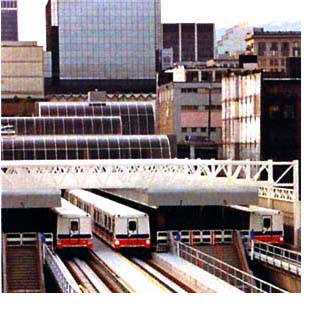Operational Problems
[Main]
[Background]
[Outline]
[Methodoloy]
[Analysis]
[Conclusion]
 Data Management: First it should be noted that there were some enumeration areas that showed no data. However, these are relatively few the areas were quite small so it should have little effect. Also, during the data transformations, decimals were truncated to get whole numbers. However, the data ranges from values of 1 to 10 000 so this shouldn't insignificant to the results.
Data Management: First it should be noted that there were some enumeration areas that showed no data. However, these are relatively few the areas were quite small so it should have little effect. Also, during the data transformations, decimals were truncated to get whole numbers. However, the data ranges from values of 1 to 10 000 so this shouldn't insignificant to the results.
Raster Surface: Certainly the biggest problem with the analysis is that a truly continuous surface was not created, but a raster coverage with small homogenous blocks. However, there are over 2700 enumeration areas in the GVRD coverage which does create an acceptably fine resolution to conduct this analysis in a meaningful way.
Reclassification of Data: Finally, the reclass does distort the relative relationships between the density scores of the enumeration areas. Of course this was done to distort the results somewhat in order to get a smoother line by creating larger homogenous blocks (and therefore smoother data). However, in all the reclasses, I assigned scores that fell within that classes range to maintain some continuity in data (as opposed to just arbitrarily ranking 1, 2, 3, 4…..).
 Data Management: First it should be noted that there were some enumeration areas that showed no data. However, these are relatively few the areas were quite small so it should have little effect. Also, during the data transformations, decimals were truncated to get whole numbers. However, the data ranges from values of 1 to 10 000 so this shouldn't insignificant to the results.
Data Management: First it should be noted that there were some enumeration areas that showed no data. However, these are relatively few the areas were quite small so it should have little effect. Also, during the data transformations, decimals were truncated to get whole numbers. However, the data ranges from values of 1 to 10 000 so this shouldn't insignificant to the results.